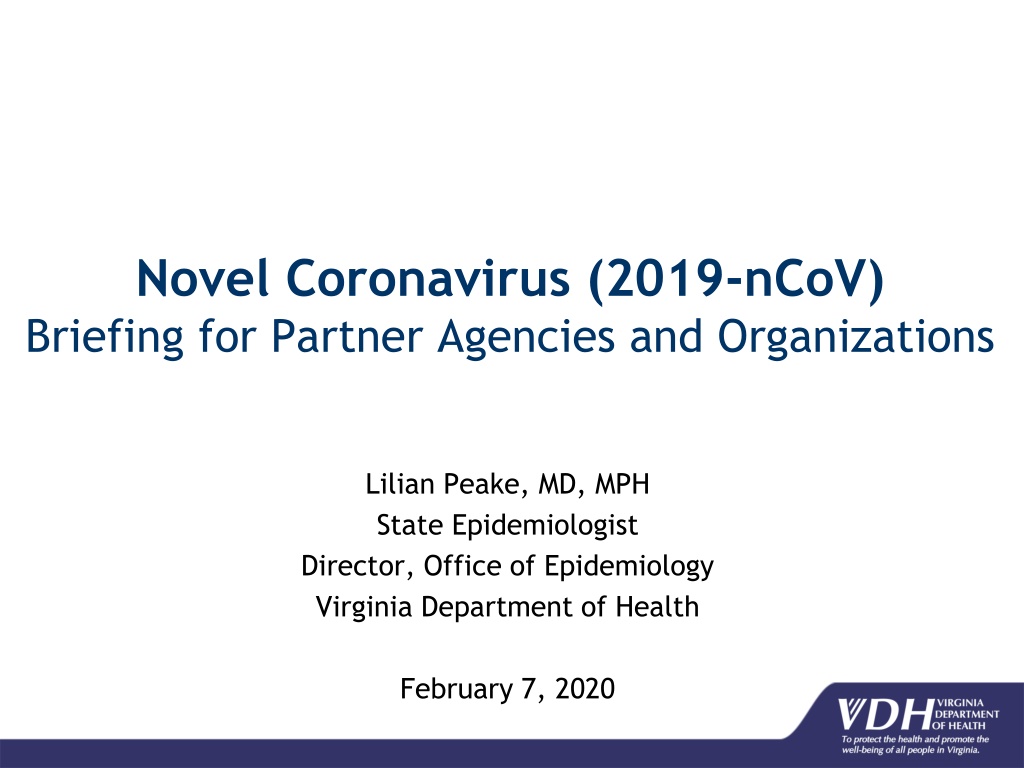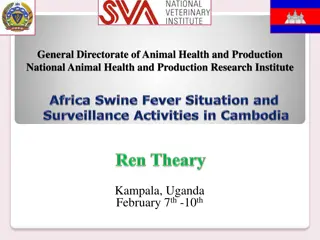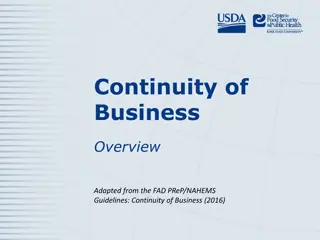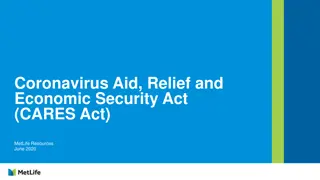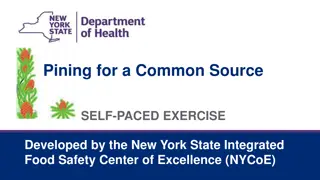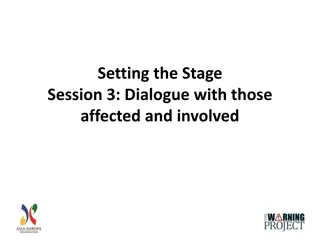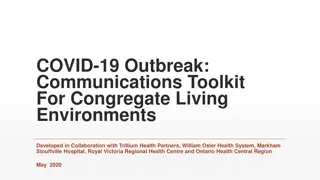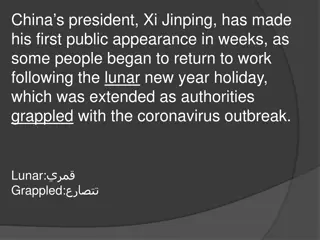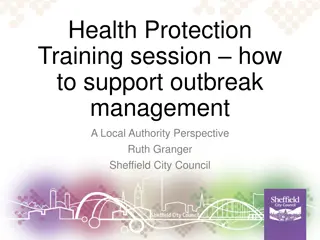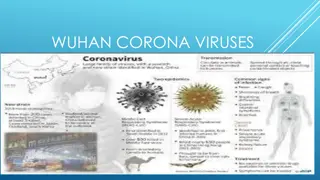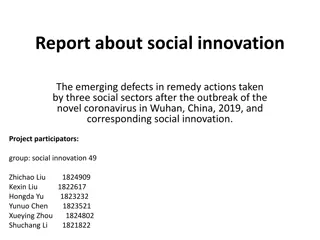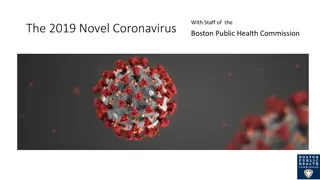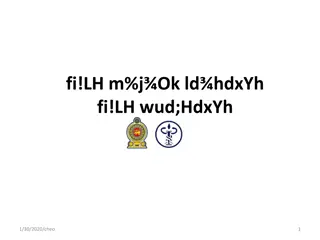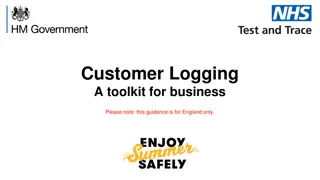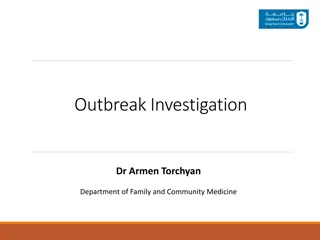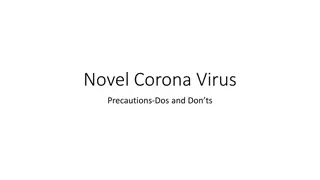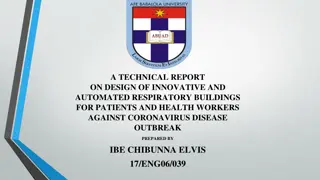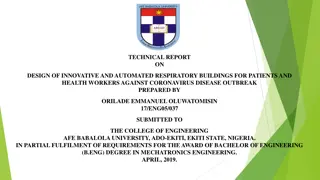Understanding the 2019 Novel Coronavirus Outbreak
The briefing provides valuable information about the 2019 Novel Coronavirus (2019-nCoV), including its symptoms, comparison to past CoV epidemics, contagiousness, outbreak timeline, and global cases. Key points include the contagiousness of 2019-nCoV compared to other diseases, the origin of the virus, confirmed cases globally, and recommended testing criteria. Stay informed and take necessary precautions to prevent the spread of the virus.
Download Presentation

Please find below an Image/Link to download the presentation.
The content on the website is provided AS IS for your information and personal use only. It may not be sold, licensed, or shared on other websites without obtaining consent from the author. Download presentation by click this link. If you encounter any issues during the download, it is possible that the publisher has removed the file from their server.
E N D
Presentation Transcript
Novel Coronavirus (2019-nCoV) Briefing for Partner Agencies and Organizations Lilian Peake, MD, MPH State Epidemiologist Director, Office of Epidemiology Virginia Department of Health February 7, 2020
Coronaviruses that Infect People 4 cause common cold symptoms 2 (SARS and MERS) cause severe lung infection Spread through coughing, sneezing or close personal contact 2019 Novel Coronavirus still learning about it Symptoms start 2-14 days after exposure 2
2019-nCoV Compared to Past CoV Epidemics CoV Origin Cases Deaths 492 Dec 2019 (China) 2019-nCoV As of 2/5/20* 24,554 CFR (Estimates) = 2-4% 2012 858 CFR = 34% 2,494 (Saudi Arabia) MERS-CoV 8,098 774 CFR = 10% 2002 (China) SARS-CoV (None since 2004) *Reported by the World Health Organization 3 Sources: www.who.int/health-topics/coronavirus; diseases/novel-coronavirus-2019/situation-reports/
How Contagious Is It? Disease R0 MERS-CoV < 1 Seasonal influenza 1-2 Estimate as of 1/30/20: 1.4-3.0 3 2019-nCoV SARS-CoV Measles 12-18 4 Source: www.who.int/emergencies/diseases/novel-coronavirus-2019
When Did the Outbreak Start? First known confirmed case 12/8/19 Novel coronavirus isolated in China 1/7/20 CDC developed lab test 1/19/20 1/13/20 First exported case from China 12/29/19 Cluster of 44 cases of pneumonia identified in Wuhan 1/21/20 First U.S. case diagnosed 5 Source: www.who.int/emergencies/diseases/novel-coronavirus-2019/situation-reports/
How Many People Are Sick? 314 cases 1/21/20 6,065 cases 1/29/20 1,320 cases 1/25/20 14,557 cases 2/2/20 44 cases 1/3/20 1/20/20 3 countries 1/24/20 6 countries 1/28/20 14 countries 2/1/20 23 countries Confirmed Cases as of 2/5/20 Reported by WHO and CDC Total 24,554 cases China 24,363 cases; 491 deaths Outside of China 191 cases; 24 countries United States 11 cases 6 Source: www.who.int/emergencies/diseases/novel-coronavirus-2019/situation-reports/
Who Should Be Tested for 2019-nCoV? As of 2/6/20 Patients should be evaluated and discussed with public health departments on a case-by-case basis if their clinical presentation or exposure history is equivocal (e.g., uncertain travel or exposure). 7 Source: www.cdc.gov/coronavirus/2019-nCoV/clinical-criteria.html
What Is the Risk for Virginians at this Time? As of 2/5/20, 11 cases in US o AZ, CA, IL, WA, MA o More cases likely No cases in Virginia at this time 2019-nCoV is NOT currently spreading in the community in the US Immediate risk to general public is low o People exposed to ill persons are at greater risk - family members and healthcare workers caring for patients with 2019-nCoV Situation is evolving o Future risk will depend on how well the virus spreads and how sick it makes people 8 Source: www.cdc.gov/coronavirus/2019-ncov/cases-in-us.html
How Is the U.S. Responding? Information and guidance CDC Level 3 Travel Advisory - Avoid all nonessential travel to China Surveillance Diagnostic test developed Ongoing research for medicine to treat people who are sick with 2019-nCoV Started on vaccine development US public health emergency declared 9
How is the U.S. Responding? Foreign nationals who visited China in previous 14 days may not enter the US US citizens and exempted persons: If coming from China directed to 1 of 11 airports, including Dulles Undergo health assessment, and if symptomatic, transferred for medical evaluation If in Hubei in previous 14 days, undergo up to 14 days of mandatory quarantine If in rest of China in previous 14 days, undergo up to 14 days of self-quarantine with public health monitoring 10
How is VDH Responding? Established ICS structure to coordinate the public health response Daily command meetings Weekly situation reports Working closely with clinical providers and CDC EOC to find, isolate, and diagnose cases early to help prevent further spread Providing targeted guidance Case managing patients who are being tested for the virus and identifying contacts of those patients
How is VDH Responding? Public health monitoring based on level of exposure risk Active monitoring Supervision of self-monitoring Movement restrictions, including isolation and quarantine Developing an Incident Action Plan (IAP) in preparation for the potential of further spread within the U.S. 12
How is VDH Responding? Education and information www.vdh.virginia.gov/coronavirus Press releases Plans in place to active statewide call center if necessary Targeted outreach and education o University and college student health centers o Department of Education o Department of Emergency Management and local emergency managers o Virginia Hospital and Healthcare Association 13
What Can Partner Agencies/Organizations Do? Maintain open lines of communication with your local health department or the VDH central office Review emergency operations plan, continuity plan, etc. Be prepared to provide support to Emergency Support Function (ESF-8) as identified in the Commonwealth of Virginia Emergency Operations Plan (COVEOP) Maintain situational awareness through trusted sources Direct residents to www.vdh.virginia.gov/coronavirus 14
Take Home Messages Rapidly evolving situation o Case counts will grow in the coming days and weeks o Interim guidance will change Vigilance, frequent communication, and coordination among partners is critical More to learn about virus source, transmission factors and risks Promote flu and respiratory infection prevention Updates will be communicated via www.vdh.virginia.gov/coronavirus as information is available 15
Resources Virginia Department of Health (VDH) 35 Local Health Districts www.vdh.virginia.gov/coronavirus Respiratory@vdh.virginia.gov Centers for Disease Control and Prevention (CDC) www.cdc.gov/coronavirus/2019-nCoV World Health Organization (WHO) www.who.int/emergencies/diseases/novel-coronavirus- 2019 16
